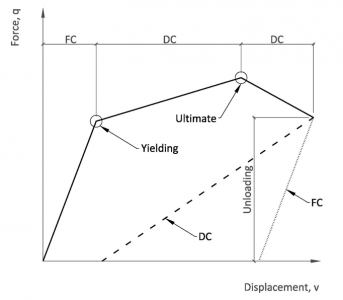A switch-based hybrid simulation (SHS) method is developed. SHS combines analytical and experimental sub-assemblies to examine the dynamic responses of a structure during an earthquake shaking. SHS switches between the displacement-based and force-based algorithms to control hydraulic servo actuators in displacement or force. It improves experimental accuracy and safety to validate structural systems that undergo drastic changes in stiffness.

Hybrid simulation (HS) is a novel technique to combine analytical and experimental sub-assemblies to examine the dynamic responses of a structure during an earthquake shaking. Traditionally, HS uses displacement-based control where the finite element program calculates trial displacements and applies them to both the analytical and experimental sub-assemblies. Displacement-based HS (DHS) has been proven to work well for most structural sub-assemblies. However, for specimens with high stiffness, traditional DHS does not work because it is difficult to precisely control hydraulic servo actuators in small displacement. A small control error in displacement will result in large force response fluctuations for stiff specimens. This research program resolves the challenge by formulating a force-based HS (FHS) algorithm that directly calculates trial forces instead of trial displacements. FHS is finite element based and applicable to both linear and nonlinear systems. For specimens with drastic changes in stiffness, such as yielding, a switch-based HS (SHS) algorithm is developed. A stiffness-based switching criterion between the DHS and FHS algorithms is utilized. SHS has been applied to highly nonlinear and highly indeterminate structural systems.


